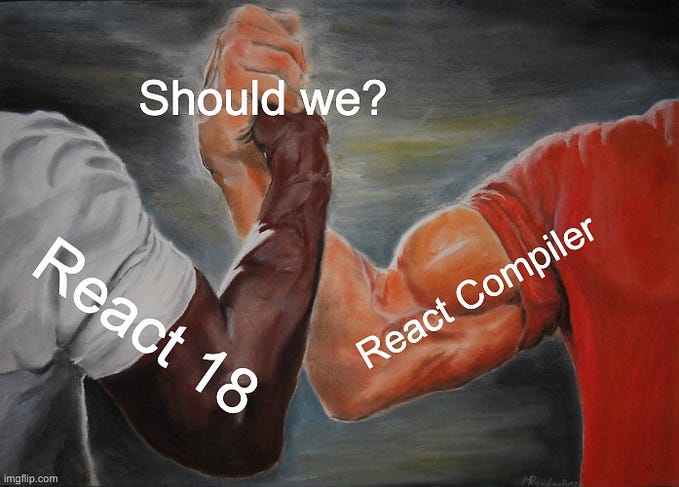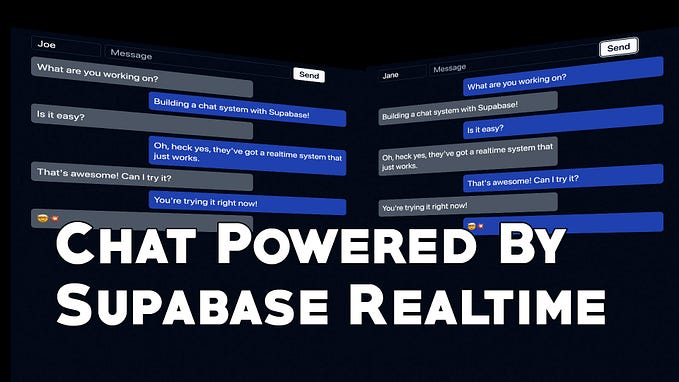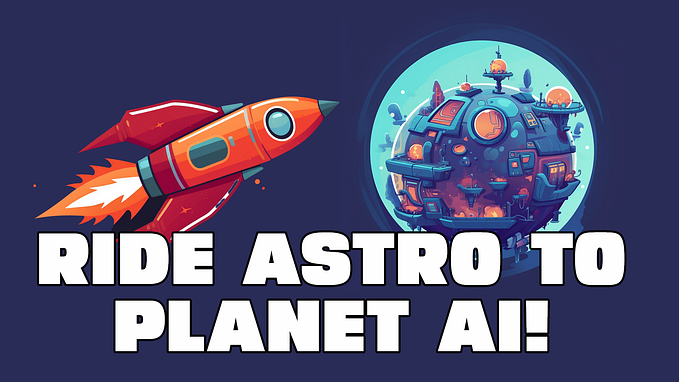How To Set Up Your Mirrorless/DSLR For Zoom/YouTube/Twitch/etc.
I get asked a lot about what camera and lens I use and how I set it up when I shoot video for my YouTube channel. So I figured I’d write an article about it so I can send folks to it.

Camera And Lens Selection
I use a Sony A7SIII (the legend) with their 35mm GM prime lens. I chose Sony because I’ve worked with a bunch of professional videographers and they use it.
There are two types of lenses; zoom and prime. I chose a prime lens because I didn’t need zoom, and prime lenses are faster, meaning lower aperture, than zoom lenses. They also tend to produce a better image.
I chose 35mm as my focal length after a lot of testing. 35mm had the most relatable feel and fit well with my setup.
Wider angle lenses (i.e. 24mm and below) can give a weird fish-bowl distortion. But they have the advantage of being able to see a lot more of the room.
Lenses with longer focal length (50mm and above) give a very flattering look and are great for headshots and portraits. But the camera needs to be further back to get more coverage. And that can be a problem when you have a monitor and all that.
I wouldn’t buy a bunch of different lenses to try them out. I would use a lens rental service to check out a bunch of lenses, then buy the one that I liked best.
My 35mm setup goes on a fixed mount right above and behind my monitor, roughly in the same place you would put a webcam. And there is an Elgato Prompter attached to the lens.
The Exposure Triangle
Because my camera is fixed I set all, and lock, all three components of the “exposure triangle”. The three components are aperture, shutter speed and ISO. For someone new to videography, having three interdependent variables is tricky to deal with. So I like to take them one by one and lock them down. Let’s start with the easiest two.
Shutter Speed and ISO
Shutter speed is how long the camera holds the shutter open when taking a photo. Video is just a series of photos. So this is important even in video. The good news is that it’s easy to set. You want to set the shutter speed to 2X whatever your video frame rate is. So if you are shooting at 24FPS, then use 1/50th for the shutter speed. 30 FPS means 1/60th. 60 FPS is 1/120th. Set this value and forget it.
If you don’t know what your FPS is, then check the record settings on the camera. If given the choice I would go for 30FPS. 24FPS is more “cinematic”. And 60FPS is largely unnecessary for these kinds of videos.
The other easy one is the ISO setting. ISO is speed of the film. Since there is no film this is really just a gain knob on the CCD sensor. The more gain, the more noise. So ideally you want this gain set to 1 for no noise. Gain of 1 is the “native ISO” or “base ISO”. So you want your ISO set to the native ISO for the least possible noise, and best possible results. On my camera the native ISO is around 80. So my camera is set to 100, which is perfectly fine. You can bump the ISO a little and it will still be fine. But if you are getting to over 1,000 ISO then you’ll start seeing noise.
Aperture
Aperture control is the reason that folks use a DSLR or Mirrorless camera for videography. With aperture you can control the “depth of field”, which is the amount of distance in the frame that is in focus. With a short depth of field the background become blurred. That blur is beneficial because it seperates you from the background. It’s also visually appealing and the quality of that blur is called “bokeh”.
A fast lens like mine (maximum aperture is f/1.4) gives a nice bokeh in most standard distances up to around f/3.
Your first inclination will be to set your aperture to the fastest setting. Let’s say that’s f/1.8. This is a trap. First off, this will give you a razor thin depth of field. If your eyes are in focus, your ears and tip of your nose will be blurry. It’s that thin. That’s a really weird look, and it’s also very hard on the autofocus.
Second, the fastest speed of the lens is not as sharp as say 2X the fastest aperture. You can experiment with this, but a good rule of thumb is that the sharpest the lens will be is around 2X the fastest aperture. So with f/1.8 the sharpest will be around f/3.6.
You can play with that number. But try to find an aperture value where most of your head is in focus. If you have a prime lens (not a zoom) try f/3 to start.
Locking The Exposure Triangle
Once you have the FPS, shutter speed, ISO and aperture set you should just lock that down. I use manual mode on my camera for that. If you let the camera adjust those values then it will be difficult to dial in the lighting because you’ll change the lights, and the camera will balance to find the right settings, then you’ll change the lights again and around and around you’ll go.
Lighting
Let’s talk all about lighting.
The Lights You Need
Lighting is an art. But let’s keep it simple. You want at least one light, called a key light, that is aimed at your face. You can experiment with the angle of that light. Right in front of you will give you flat lighting. Off to the left or right will give your face more depth and more drama. There are also above and below. Below gives a weird halloween look. Above can accentuate your jawline. My keylight is about 20 degrees to the right, and 15 degrees above.
Another important light is the “hair light”. That goes above and behind your head, and is pointed at your head. The idea is to give a ridge of light across your head/hair that pulls your head away from the background.
Finally there is the scenery lighting. Which is either the green screen lighting, which is a whole article on it’s own. Or background object lighting. My only suggestions with these are that you don’t point the lights at the camera. And that you watch out for LED “strobing”. LEDs have an update cycle and the combination of the FPS of the camera and the LEDs can create a flicker effect. If that’s the case either dump the LEDs for something else, or crank the FPS on your camera and adjust accordingly.
Softboxes
Generally speaking the larger the light source the more diffuse and flattering it will be. The smaller the light source the harsher it will be. If you have the space then go for a lightbox or a diffuser for the keylight if you can.
Lighting Temperature
Getting the key light temeperature dialed in is important. I run my keylight at 5200K. That works for my complexion. You can adjust as you please. Lower Kelvin numbers will add more orange to the light, giving a warm life-like look. And higher numbers will add more blue which gives a cooler look.
You can go too far in one direction. On accident I shot a whole series on 4500K and I’m orange throughout. It’s not good. You can “fix this in post” to a degree, but getting it “right in camera” is the best way to go. Have an honest friend that cares give you some feedback. Record some tests at various levels and get some feedback.
Lighting Intensity
The aspect to get right is the lighting power setting. Too little light and you’ll be in darkness, too much and you’ll be blown out and you’ll clip the whites. Too much in either direction will cause autofocus problems.
A video monitor with false color is your friend here. They are really cheap on Amazon. The false color will tell you what parts of the image are over or under exposed. I record my video to an Atomos Ninja V and it has a false color setting that I use to dial in the lighting strength.
BTW, another advantage of a prime lens with a fast aperture is that you need less light to light the scene properly. And that’s good if you don’t want to burn out your eyes or sweat yourself out of your clothes.
Auto Focus
Once you have the aperture triangle and lighting dialed in then any camera should be able to manage auto-focus properly. I’ve tried manual focus in the past, but it’s really not worth it. You have to think about where you are and if you’ve moved too much. And you really don’t want to get to the end of a recording only to find that the whole thing needs to be re-shot because you are unacceptably blurry. People want crisp crunchy video nowadays.
I do use autofocus. But it’s not set to anything crazy. It’s center weighted and I think I have human eye tracking auto-focus set on.
Video Format
I do not shoot in SLOG or anything tricky. For my money, SLOG and those exotic formats are for shooting films, or shooting outdoors where you need maximum dynamic range to compensate for bad lighting. If you are in a controlled lighting setup you should be able to take the video from the camera straight into your final production with no alteration (although I do green screen removal in my footage.)
There is a whole field out there called color grading that deals with taking video shot in SLOG type formats and turning it back into something reasonable for display. Do yourself a favor and don’t do this to yourself. If you are making tech content you do not need to grade your footage.
Conclusion
In conclusion, audio is way more important than video, so you should spend your money there. Haha, just kidding. Actually no I’m not, seriously, audio is way more important. I think most folks really just listen to YouTube, so… anyway, this article should help you get started with the crazy world of videography.
A couple of more thoughts; first off, literally each of these things. Photography settings, lighting, even focus are actual professional jobs. At Hollywood level there are folks called focus pullers whose full time job is focusing the camera lenses (which are usually manual). Seriously, it’s a fascinating job, research it sometime, it’s amazing.
The important thing here is to dial it in, lock it down, and forget about it so that you can literally just fire up the camera, start recording, and make videos. Any content creator that has been doing this will tell you that every setting you have to set, or thing you have to turn on to make recording happen, is one more thing you can screw up and ruin a recording. So lock it in, make it simple, don’t go crazy.









